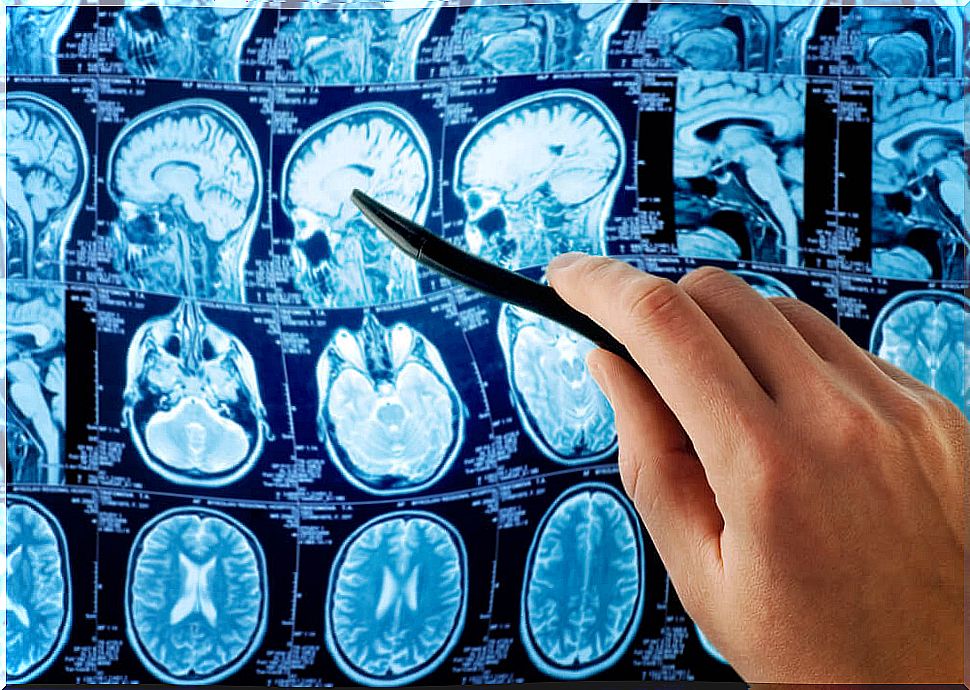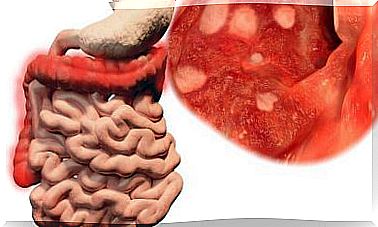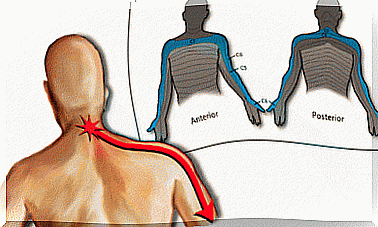Ramsay Hunt Syndrome: What Is It?
Ramsay Hunt syndrome is a consequence of the chickenpox virus. It comprises a set of symptoms and signs that appear due to the fact that this viral agent is capable of affecting certain nerves. Specifically, to the facial nerve.
The facial nerve contains motor and sensory fibers. It innervates different parts of the face, so it helps us with gestures, such as those used to eat and speak.
Ramsay Hunt syndrome can cause facial paralysis and hearing loss in the same side ear. It is a fairly frequent entity. Therefore, we explain everything you need to know.
What is Ramsay Hunt syndrome?
Ramsay Hunt syndrome is one of the affectations that the varicella-zoster virus can produce. This particle belongs to the herpesvirus family.
According to an article published in the Annals of Internal Medicine, Ramsay Hunt syndrome consists of a paralysis of the facial nerve. In addition, it is usually accompanied by eruptions with vesicles on the pinna or even inside the mouth.
It is the second most frequent cause of paralysis of the facial nerve at the peripheral level. In fact, it represents 7% of all of them. This is because varicella-zoster virus infection is very common in the general population.
Another study published in SEMERGEN Family Medicine affirms that the clinical presentation is very varied. That is why it is usually classified into 4 stages based on severity. The full form, or rather the first one that was described, includes the following signs:
- General infectious syndrome, with malaise, fatigue and pain.
- Skin rash and hearing impairment.
- Affectation of taste sensations.
- Peripheral facial paralysis.
Causes of Ramsay Hunt syndrome
The cause of Ramsay Hunt syndrome is the varicella-zoster virus. It appears in people who have already had chickenpox. This is because this virus is able to remain latent in the body. Specifically, it tends to lodge in nerve tissues.
When the virus reactivates it gives rise to symptoms. As an article in the Department of Health states , it is usually transmitted from person to person by touching the blisters of someone infected at that time.
However, it can also travel through the air by droplets that are expelled by coughing or sneezing. Even from contaminated objects. It is essential to have been infected by this virus in order to develop Ramsay Hunt syndrome.

Risk factor’s
Ramsay Hunt syndrome can appear in anyone who has had chickenpox. It is an essential condition for it. It is important to understand that this syndrome is not contagious.
As with shingles, when they appear, what can be spread is the virus itself. If a person who has not had chickenpox comes into contact with another who has Ramsay Hunt syndrome, what they will develop will be the typical picture of the exanthematic disease.
It should also be noted that, today, there are vaccines for this virus. Therefore, a vaccinated person is not at risk of suffering from it.
The question of age is key. It is very rare for children to develop Ramsay Hunt syndrome. It usually appears in those over 60 years of age. It is also more common in those who have a weakened immune system.
What are your symptoms?
As we saw in the first section, Ramsay Hunt syndrome has a highly variable clinical expression. As explained by specialists from the Mayo Clinic, the two main symptoms are facial paralysis and rash. It usually appears around or inside the ear. Also, there are fluid-filled vesicles.
In some cases the rash does not appear or does so after paralysis. There will be an earache, a constant ringing or even hearing loss.
With facial paralysis there is difficulty in closing the eye on the affected side. The mouth and eyes may be dry. This is because the facial nerve also innervates glands that are responsible for secreting tears and saliva.
Taste can also be altered. The ability to taste food with the most anterior part of the tongue is lost.
Ramsay Hunt syndrome complications
Ramsay Hunt syndrome can cause long-term complications . One of the most prominent is post-herpetic neuralgia. It refers to chronic pain that remains in the area where the rash occurred.
It appears because nerve fibers are damaged by the presence of the virus. Similarly, facial sensitivity and hearing can be permanently impaired or impaired. However, this is somewhat less common.
Finally, it is possible that due to the inability to close the eye during Ramsay Hunt syndrome, injury to the eye may occur. Particles or agents enter that damage the cornea, affecting vision.
How is Ramsay Hunt syndrome diagnosed?
The diagnosis of this disease is usually made from the symptoms and the patient’s medical history. As it is the second most common cause of peripheral paralysis, it is always important to consider it.
In addition, as a study published in the Clinical Journal of Family Medicine explains, there are a series of tests that can aid in the diagnosis. The first is serology. It consists of detecting antibodies in the blood against the varicella zoster virus.
Another that can help is the polymerase chain reaction (PCR). In some cases, if the diagnosis is uncertain, imaging can be done to rule out other etiologies. The most used is magnetic resonance imaging.

Available treatments
The treatment of Ramsay Hunt syndrome seeks to reduce the risk of possible complications and discomfort for the patient. For this reason, the most commonly used drugs are pain relievers. They try to reduce the pain that occurs. Anxiolytic drugs may also be prescribed in the event of dizziness.
Antivirals are to prevent the virus from multiplying further. The most useful against the varicella-zoster virus are acyclovir and valacyclovir. They can be combined with corticosteroids to increase their effect.
Ramsay Hunt syndrome is secondary to chickenpox
What we must bear in mind is that this syndrome only occurs in people who have been infected by the varicella zoster virus. It usually appears years after infection, especially in the elderly.
It is characterized by facial nerve palsy and a vesicular eruption. Before any of the signs you should consult a doctor. Proper treatment can reduce the risk of long-term complications, such as chronic pain.








